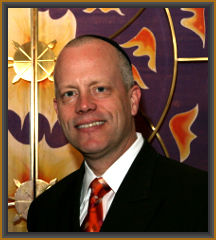
 |
December 3, 2021 (29 Kislev 5782) Miracles of the Past and Present Dear Friends, I hope this correspondence finds you well and in good health. We look forward to your participation this Shabbat morning at 10:30AM for our hybrid services which will take place in-person in the sanctuary, as well as over our regular Zoom prayer link. For those of you, who will join us in-person at the synagogue, we look forward to enjoying a variety of Hanukkah delicacies with you at the Kiddush! This Sunday, on December 5th, we’ll have an outdoor Hanukkah celebration and community candle lighting, to which you are all cordially invited. The celebration will start at 5PM and take place at the small park on the corner of Main Street and Lemoine Avenue, in Fort Lee. Please see below for further details. As part of my last Rabbinic Reflections, you will recall that I shared some thoughts about everyone’s “favorite Jewish Yuntif” of Thanksgiving. Well, according to recent Pew Research Center studies, the celebration of Hanukkah is American Jewry’s truly favorite Jewish festival. Perhaps Adam Sandler captured the overall sentiment best when he sang in his infamous Hanukkah song, “We have eight crazy and wonderful nights!” Most of us are familiar with the two traditions of miracles that are referenced in our liturgical texts. We celebrate the unexpected military victory of the Maccabees and the fact that a tiny crucible of oil, found inside the destroyed Temple to rekindle the Menorah, lasted eight nights instead of one. A lesser-known text regarding Hanukkah is called The Book of Judith. It is less popular because the story did not “make the cut” (pun intended) during the time of the redaction of the Bible. Some suggest that reasons for its exclusion from the cannon include the lateness of its composition, possible Greek origin, and the text’s open support of the Hasmonean dynasty, to which the early rabbinate was opposed. The story revolves around Judith, a daring and beautiful widow, who is upset with her Jewish countrymen for not trusting God to deliver them from their foreign conquerors. She goes with her loyal maid to the camp of the enemy general, Holofernes, with whom she slowly ingratiates herself, promising him information on the Israelites. Gaining his trust, she is allowed access to his tent one night as he lies in a drunken stupor. A midrash describes how our heroine gorges the enemy on cheese and wine before cutting off his head, (which may be the basis of the minor Jewish tradition to eat dairy products during Hanukkah). After decapitating him, she then takes his head back to her fearful countrymen. The Assyrians, having lost their leader, disperse, and Israel is saved. Though she is courted by many, Judith remains unmarried for the rest of her life. If you recall, the prayer of Al HaNissim is recited during the Amidah and Birkat HaMazon on both Hanukkah and Purim. As such, I like to think that in many ways, the character of Judith represents a parallel figure to the heroine of Purim, Queen Esther. Both figures represent female protagonists, empowerment, ingenuity, leadership, strength, and beauty. As we celebrate the festival of lights, we should all remember the heroes of our past, both those well-known and those not so much, who helped lay the groundwork for our flourishing Jewish community and the Torah values we enjoy to this day. We should also pray that this Hanukkah gives us the strength, drive, and encouragement to continue rekindling the spirit of Judaism for both ourselves and others. Shabbat Shalom and Chag Urim Sameach! (Happy Festival of Lights!), Rabbi Eric L. Wasser, EdD
|